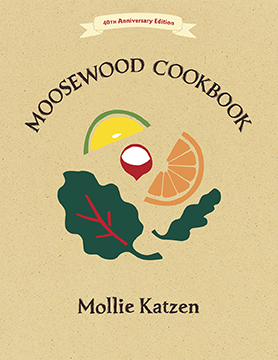Here's a thing...
At the shop, (Beanies) we were recently sent some samples of Kombucha - a lightly effervescent drink made from fermented sweetened tea. It came in different flavours so I picked a ginger one and unscrewed the cap only to have the contents of the bottle explode all over me and the desk. (Keep it chilled is the advice - this one was at a warm room temperature!) After I'd cleaned up and enjoyed the beery flavour of the ginger tea I got to reading the bottle and thinking a bit about it.
Kombucha is made from a live ferment known as a SCOBY (Symbiotic Colony of Bacteria and Yeasts) and this one seemed particularly lively. I just wondered whether it would be possible to use the kombucha to start a sourdough culture. I know this isn't always possible - some fermented products simply don't have the right mix or varieties of yeasts and bacteria. But nothing ventured, nothing gained as they say...
So I took a bottle of the original unflavoured kombucha home and used 150ml added to 150gms of strong white flour. (The photographs are my second attempt where I've used strong wholemeal simply because I've run out of white - I tend to use organic white flour for sourdough starters as they prove more stable: wholemeal starters have a tendency to separate and go mouldy if a careful eye is not kept on them - keep them in the fridge.)
So, basically...
150g kombucha
150g flour
Mix together in a plastic tub - cover lightly with a lid or cloth and put aside for 24 hours at room temperature.
By then end of the overnight fermentation the starter was sufficiently bubbly for me to feel confident to move straight to mixing a starter dough.
I added
100g white flour
and a little more water to create a slightly stiffer dough than the original mix.
This I again left overnight, covered and the following day was very happy with the fermentation.
So for the final loaf I added
400g wholemeal flour
1 tsp salt - (I don't use a lot of salt (you might prefer more) partly for health reasons and partly because sourdough bread has good flavour anyway. Salt does have an effect on both the texture and shelf life of the finished bread though so I do use some.)
1 tbsp Extra Virgin Rapeseed Oil - but you could use Olive or sunflower
More water - (I must admit I didn't weigh the water I used to create the final dough - fool! - but the final dough ball weighed about 1200g so I must have added about another 150 - 200g. It was a reasonably firm dough. Don't let it get too wet but obviously the old mantra stands - The Wetter the Better!
I mixed this final dough at around 8.00am. Kneaded for 5 mins and then left it to stand, covered, until about 12.30pm by which time it was just starting to fall back ready to be degassed and shaped. (If I'd been around during the proof I would have stretched it a couple of times, but I wasn't so I couldn't.)
Anyway dough weighed to 900g, (leaving 300g for a quick pizza for lunch) then shaped and tinned up for a final proof of about an hour. Into the hot oven (Gas Mark 7 - my oven is quite fierce) for half an hour, turning the gas down to Mark 4 after twenty minutes...
 Final result...
Final result...
My conclusion is that - yes! Kombucha can be used to raise bread very effectively! As a shortcut to a sourdough starter I think it's great. Of course once you've got your live kombucha you can keep it alive too... but I don't quite know how t do that yet... time for a little research, methinks.
I'd be fascinated to hear whether anyone else has similar experiences.
At the shop, (Beanies) we were recently sent some samples of Kombucha - a lightly effervescent drink made from fermented sweetened tea. It came in different flavours so I picked a ginger one and unscrewed the cap only to have the contents of the bottle explode all over me and the desk. (Keep it chilled is the advice - this one was at a warm room temperature!) After I'd cleaned up and enjoyed the beery flavour of the ginger tea I got to reading the bottle and thinking a bit about it.
Kombucha is made from a live ferment known as a SCOBY (Symbiotic Colony of Bacteria and Yeasts) and this one seemed particularly lively. I just wondered whether it would be possible to use the kombucha to start a sourdough culture. I know this isn't always possible - some fermented products simply don't have the right mix or varieties of yeasts and bacteria. But nothing ventured, nothing gained as they say...
So I took a bottle of the original unflavoured kombucha home and used 150ml added to 150gms of strong white flour. (The photographs are my second attempt where I've used strong wholemeal simply because I've run out of white - I tend to use organic white flour for sourdough starters as they prove more stable: wholemeal starters have a tendency to separate and go mouldy if a careful eye is not kept on them - keep them in the fridge.)
 |
| 150g wholemeal flour |
 |
| 150g kombucha |
150g kombucha
150g flour
Mix together in a plastic tub - cover lightly with a lid or cloth and put aside for 24 hours at room temperature.
By then end of the overnight fermentation the starter was sufficiently bubbly for me to feel confident to move straight to mixing a starter dough.
I added
100g white flour
and a little more water to create a slightly stiffer dough than the original mix.
This I again left overnight, covered and the following day was very happy with the fermentation.
So for the final loaf I added
400g wholemeal flour
1 tsp salt - (I don't use a lot of salt (you might prefer more) partly for health reasons and partly because sourdough bread has good flavour anyway. Salt does have an effect on both the texture and shelf life of the finished bread though so I do use some.)
1 tbsp Extra Virgin Rapeseed Oil - but you could use Olive or sunflower
More water - (I must admit I didn't weigh the water I used to create the final dough - fool! - but the final dough ball weighed about 1200g so I must have added about another 150 - 200g. It was a reasonably firm dough. Don't let it get too wet but obviously the old mantra stands - The Wetter the Better!
I mixed this final dough at around 8.00am. Kneaded for 5 mins and then left it to stand, covered, until about 12.30pm by which time it was just starting to fall back ready to be degassed and shaped. (If I'd been around during the proof I would have stretched it a couple of times, but I wasn't so I couldn't.)
Anyway dough weighed to 900g, (leaving 300g for a quick pizza for lunch) then shaped and tinned up for a final proof of about an hour. Into the hot oven (Gas Mark 7 - my oven is quite fierce) for half an hour, turning the gas down to Mark 4 after twenty minutes...
 Final result...
Final result...My conclusion is that - yes! Kombucha can be used to raise bread very effectively! As a shortcut to a sourdough starter I think it's great. Of course once you've got your live kombucha you can keep it alive too... but I don't quite know how t do that yet... time for a little research, methinks.
I'd be fascinated to hear whether anyone else has similar experiences.





















